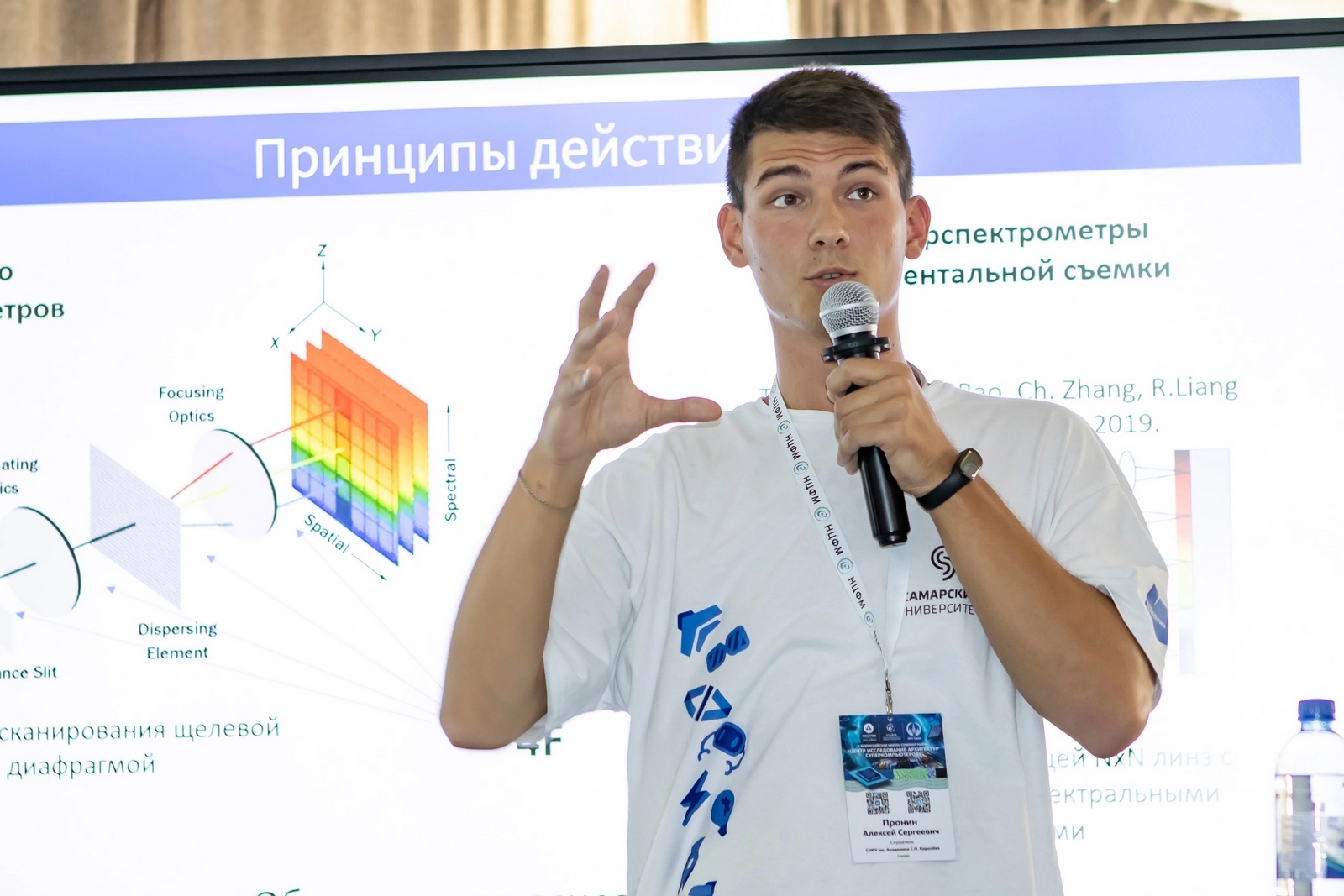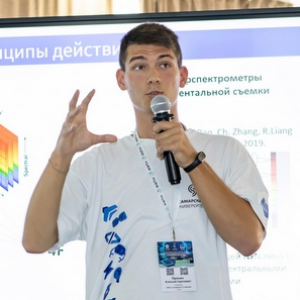Aleksey Pronin, Samara University’s student, works at the R&D Laboratory of Automated Scientific Studies (NIL-35). At this Laboratory, researchers are engaged in studies associated with optics and photonics, as well as develop innovative devices. One of these developments is optical co-processor.
The object of Aleksey Pronin’s scientific work is a hyperspectrometer based on the matrix of harmonic lenses and its optical system, similar to the part of the optical system of a computing device. The young scientist notes that, in addition to solving the main task of designing a hyperspectrometer, the calculations and experiments to have been carried out also show the alternative option for using a coprocessor to parallelize computation.

“Moore’s Law states, “The number of transistors in an integrated circuit doubles every two years”. This statement has been true since 1970”, explains Aleksey, “However, in the near future, the processors that every one of us is used to see will reach maximum capacity of transistors. Therefore, the future of supercomputer development is in the combination of a conventional processor and an optical co-processor. As soon as we manage to minimize the computational error to an acceptable value, quantum computers will occupy the supercomputer niche.”
Aleksey presented his work at the All-Russian School-Seminar “Centre for Studies of Supercomputer Architectures”, which was held at the National Centre for Physics and Mathematics (NCPhM) in Sarov. Samara student’s work was rated by the School’s experts as the best report.
“The School made it possible to gain not only the experience of speaking at a scientific conference. The speakers, who are very respected in scientific community, delivered their complex and interesting lectures on current trends and challenges in designing quantum supercomputers and developing existing computing systems”, noted Aleksey.
The School-Seminar at the NCPhM touched upon the current state and key trends in developing supercomputing technologies in Russia and in the world. Researchers told young scientists about prospects of using these technologies in solving urgent problems of science, technology and industry, presented results of original research in designing photonic and neuromorphic computing systems and accelerators. A number of lectures were dedicated to application of artificial intelligence technologies in supercomputer computation, for the purpose of increasing their performance.
The lectures were given by Nikolay Kolachevsky, Corresponding Member of the Russian Academy of Sciences (RAS), Director of the RAS’s Lebedev Physical Institute, Aleksandr Sergeev, Academician of the RAS, Director for Science of the NCPhM, Igor Kalyaev, Academician of the RAS, Director for Science of the section, Ruslan Smelyansky, Corresponding Member of the RAS, Head of Moscow State University’s Laboratory of Computing Complexes, Dmitry Bisikalo, Academician of the RAS, Deputy Director for Science of the NCPhM, Chief Scientific Secretary of the NCPhM, Rashit Shagaliev, Corresponding Member of the RAS, Co-Chairman of the School Program Committee, Deputy Director of the RFNC-VNIIEF, First Deputy Director of the ITMF RFNC-VNIIEF, Head of the Mathematical Department.
Roman Skidanov, Professor at Samara University’s Department of Engineering Cybernetics, delivered his lecture “Optical circuits of optical neural networks”.
